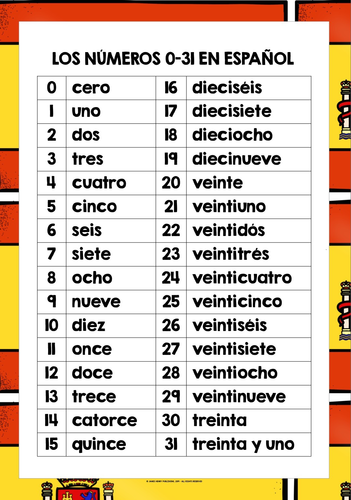



PRIMARY SPANISH KS2 SPANISH KS3 SPANISH SPANISH FOR CHILDREN BEGINNER SPANISH NUMBERS 0-31 LOS NÚMEROS 0-31 EN ESPAÑOL LIST FREEBIE
Files are non-editable in a zipped format. The resource is copyright, all rights reserved. It may not be copied, shared, amended, rewritten or distributed, in whole or in part, outside your own classroom in any way. The license is a single-user licence only. The product is free to download, but Terms of Use still apply.
I encourage my beginner Spanish students of all ages and stages to build up comprehensive vocabulary banks that they can reference easily whenever they need it, and they’re also really useful for regular vocabulary audits, which really helps students map their progress and keep track of their learning. Students take responsibility for organizing their own learning materials from the very beginning of their learning, keeping them carefully in vocabulary learning binders or folders. My students all have reference resource folders or files - these can have a range of formats - for instance, sticking into a large exercise book, or punching holes down the left-hand side, and adding to files (we also use twine or thick string).
I also use this kind of vocabulary list for quick vocabulary quizzes, spelling competitions and so on, and it also works well laminated for small-group work in class time. The font size is fairly large, as ensuring that language is clear and accessible is essential for beginner language learners, as they begin to familiarize themselves with words and spelling systems in a new language.
There are two backgrounds to choose from - Spanish flag, which I generally use for Spanish vocabulary display, and plain.
Have a browse in my store for more freebie Spanish vocabulary lists, including a selection of visual vocabulary lists for very young learners, and a wide range of other Spanish teaching and learning materials, with Spanish resource boxes, special offer bundles, and lots of freebies.
¡MUCHAS GRACIAS Y BUEN APRENDIZAJE!
Something went wrong, please try again later.
It's really useful to have lists of vocabulary students need to know, thanks for sharing!
Very useful
Gracias!
Gracias
Report this resourceto let us know if it violates our terms and conditions.
Our customer service team will review your report and will be in touch.